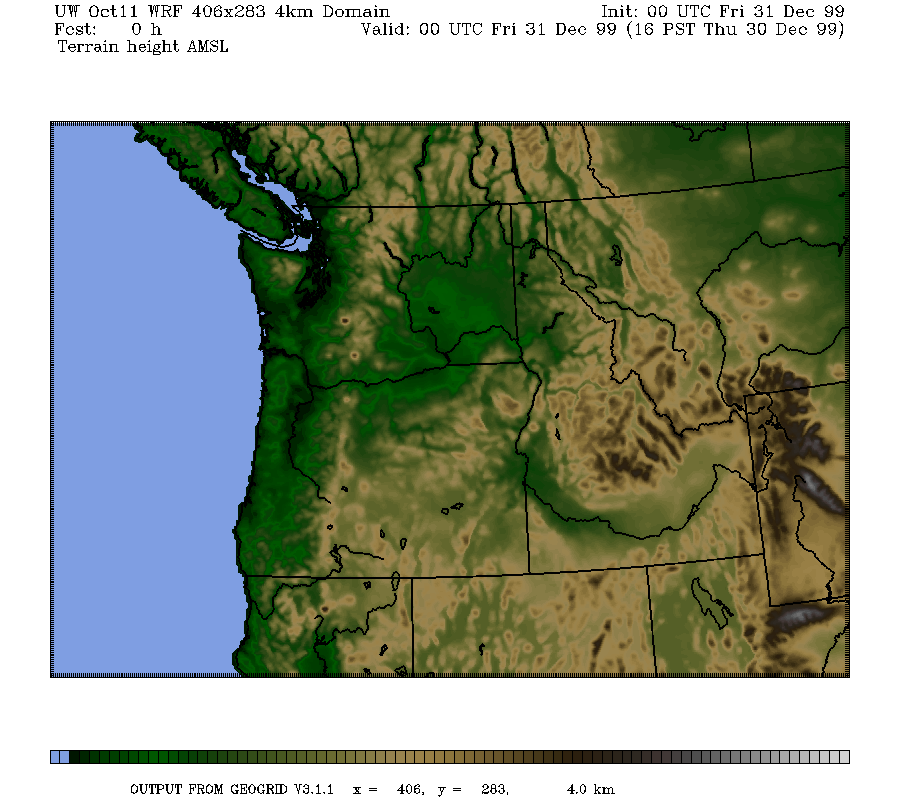Let's begin by looking at the surface air temperature forecast for 10 PM tonight. White is air below -4F. The interior of the continent is quite cold, with a substantial warming west of the Rockies.
A closer-in view from the UW-WRF 4-km domain shows the story more clearly. Eastern Washington is an intermediate temperature, while western Washington, BC, and Oregon are warmer.
The high plateau of eastern Washington is warmer for reasons I will explain in a minute.
As you can imagine, the Rockies act to block cold air over the continental interior. And in fact, the primo cold air is not that deep, as shown by the radiosonde at Billings, Montana (see below, temperature--right line--and dew point are plotted with height) at 4 PM Saturday. The coldest air is limited to roughly the lowest 2500 meter (about 8000 ft), surface temperature around -25C (-13F), with a layer of increasing temperatures (and inversion) to about 2900 meters (about 9500 ft). It is air in this intermediate, warming layer that is high enough to get across the Rockies.
So the coldest air is at low levels and is blocked by the terrain. Some warmer (but still cold) air pushes across the Rockies and then sinks on the western side into eastern Washington. This air warms by compression as it sinks. You can think of the Rockies as a big strainer that blocks the really cold stuff.
Lets examine what gets across the Rockies. Here is the radiosonde sounding at Spokane at 4 PM l. Note that the surface temperature is now about -10C (14F)...TWENTY SEVEN DEGREES WARMER than at Billings. And note that the coldest air is shallower as well..about 1300 meters (4200 ft). So eastern Washington is much warmer than western Montana. But why is the Oregon plateau warmer? Because the cold air west of the Rockies is shallow and the Oregon plateau is quite high, much of it above 4500 ft.
The Cascades block the coldest air at low levels in eastern Washington, except for a narrow current getting through the near sea level Columbia Gorge. Some intermediate air can get across the Cascades, but it is warmed as it descends to the west side. The Salem, Oregon radiosonde sounding shows a very thin veneer of cool air (surface at 8C, 46F), 59F warmer than Billings. Above the thin layer of cool air is an inversion, like we saw in the other soundings (but they were much stronger).
So we have two barrier, that keep the coldest, densest air from getting across the terrain, with the air that gets over being warmed by compression as it sinks.
And you thought the Seahawks had a great defense....our protection from cold air in even more formidable.
PS: There is little snow threat for Seattle from the incoming system (in fact the atmosphere is warming now), but cold air coming through the Fraser River Gap is producing some snow around Bellingham and over the San Juans. Even Everett got a bit. The mountains will get substantial snow during the next 48h...here is the WRF forecast for that period. 2-3 feet in the central and northern Cascades.

















No comments:
Post a Comment